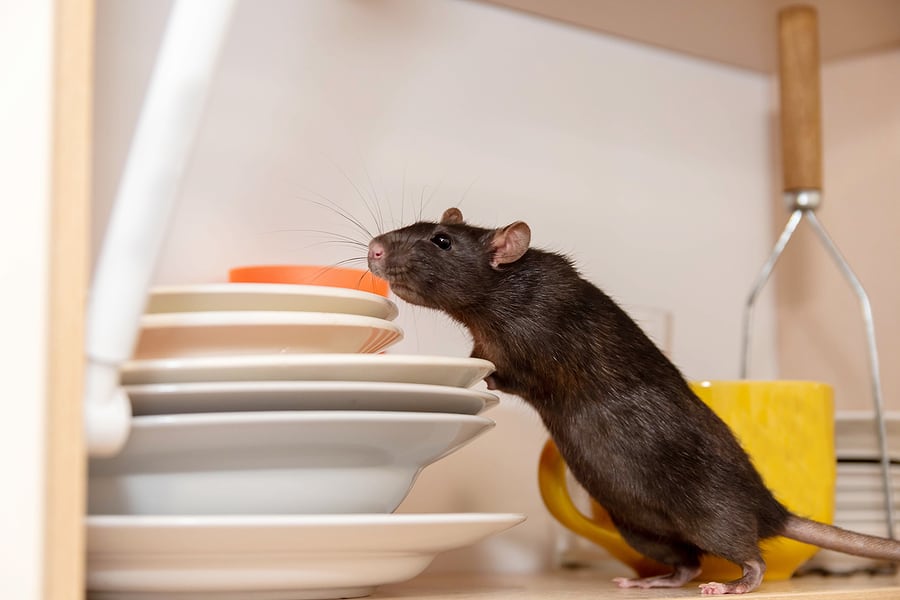READY TO GET STARTED?
REQUEST A FREE ESTIMATE
Fill out the form below or call (888) 466-7849 for a free, no-obligation estimate.

Rats and mice are both rodents and while they are often mistaken for each other, the similarities really end there. These two pests don’t breed with each other and typically nest in different places. If a population is big enough that the two species cross paths on a regular basis and the food sources nearby are plentiful, then they can inhabit the same area at the same time; this is rare, however. Most often they are competing for the same food and rats will kill mice instead. In fact, mice and rats give off very distinctive odors and mice will flee when they smell rats nearby.
Rats vs mice can be confusing and the two are often mistaken for each other when they infest your home.
Mice are much smaller than rats, usually only 2″ to 4″ long. They typically have lighter brown coloring and dark tails. Their ears are proportionately larger when compared to their body size than those of rats. Mice have wide, blunt snouts, small feet, and small, beady eyes. They prefer to eat grains and plants but will eat leftover food and garbage if inside. They can also go long periods of time without water. They typically nest in hidden areas near their food sources (e.g. your kitchen). They produce more droppings per day than rats (70-150) but their droppings are smaller in size and usually scattered throughout the house. They are more curious than rats and easier to trap.
Rats are much larger than mice, usually ranging from 8″ to 10″ in length. They also have much darker coloring. Their ears are proportionately smaller when compared to their body size than their mice cousins. They have sharp, narrow snouts, large hind feet, and large, prominent eyes. Rats are omnivores and will eat anything they find, including meat. They require regular amounts of drinking water than mice do. Depending on the species, rats also nest in different areas than mice. Norway rats will often dig under buildings, along fences, and hide under debris and landscaping. Roof rats will typically nest in higher locations (e.g. roofs, attics, and rafters). Rats produce larger feces (about 2 cm in size). Rats are more cautious than mice and can be more difficult to trap. They are also strong swimmers.
Both rats and mice are dangerous to humans. Risks of a rodent infestation of any kind include gnawing through surfaces, insulation, and wires; contaminating surfaces with urine and droppings; and carrying and transmitting harmful pathogens like salmonellosis, plague, and trichinosis.
The best treatment against a rodent infestation is to prevent them in the first place. Here are some of our top rodent prevention tips you can utilize in your home.
If you suspect a problem with rodents or any other pest, contact your local pest control company who can help identify which rodent you are dealing with and set you up with the most appropriate rodent control plan for your situation.
Wildlife Creatures to Lookout for this Winter
3 Ways to Prevent Cockroaches From Your Home
Why Enclosing Your Crawlspace Matters